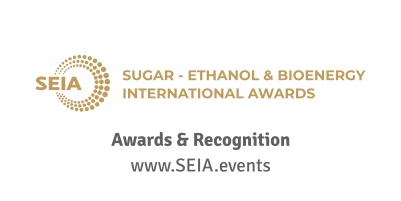As the aviation industry faces mounting pressure to reduce its environmental footprint, Sustainable Aviation Fuel (SAF) has emerged as a critical solution to one of the sector’s most pressing challenges: decarbonization. Offering a huge reduction in greenhouse gas emissions and compatibility with existing aircraft infrastructure, SAF is no longer just an experimental idea, it’s a vital part of aviation’s roadmap to a net-zero future.
But what exactly is SAF, how does it work, and why is it gaining such momentum now? We are going to explore the science, potential, and growing market behind SAF, along with the critical role that testing and quality assurance companies like Precision Analyzer Company (PAC) play in ensuring it meets rigorous industry standards. From feedstock to flight, we delve into how SAF is reshaping aviation and what it will take to scale this cleaner fuel to global levels.
What is SAF?
Sustainable Aviation Fuel (SAF) is a renewable, low-carbon alternative to traditional fossil-based jet fuel. It is produced from sustainable feedstocks like used cooking oil, agricultural residues, algae, and even municipal solid waste. SAF is chemically similar to conventional jet fuel, making it a “drop-in” replacement so that it can be used in existing aircraft and infrastructure without modifications.
SAF is part of a broader family of sustainable fuels, which also includes bioethanol, biodiesel, hydrogen fuel, and synthetic fuels (e-fuels). These fuels are designed to reduce greenhouse gas (GHG) emissions and dependence on fossil fuels, offering a cleaner path forward for industries like aviation that are hard to decarbonize.
Why SAF?
The aviation sector contributes approximately 2–3% of global CO₂ emissions, and with increasing air traffic, this figure is expected to rise. SAF presents one of the most practical and immediate opportunities to reduce aviation’s environmental impact. It offers up to 80% reduction in lifecycle greenhouse gas emissions compared to traditional jet fuel, depending on the feedstock and production process used. Beyond CO₂ reduction, SAF also contributes to better air quality by emitting lower levels of sulfur dioxide (SO₂), nitrogen oxides (NOx), and particulate matter. This can significantly improve environmental conditions around airports and reduce public health risks in nearby communities.
Perhaps one of SAF’s strongest advantages is its compatibility with existing aircraft engines and airport fuel infrastructure. It meets the same stringent performance and safety standards as conventional jet fuel, making it a viable substitute with minimal operational barriers. However, challenges such as limited feedstock availability, high production costs, and the need for scaling up manufacturing remain. Addressing these barriers is crucial for widespread SAF adoption, and ongoing collaboration across industry, government, and research institutions is key to making this shift a reality.
Market Potential for SAF
The global SAF market is poised for rapid growth as governments and industries increase their commitment to reducing carbon emissions. With more airlines pledging to reach net-zero emissions by 2050, SAF has become a cornerstone of many corporate sustainability strategies. Policy frameworks and government incentives are accelerating SAF production and use, while investor interest in clean aviation technologies continues to grow.
Since the first SAF-powered test flight in 2008, more than 400,000 commercial flights have utilized SAF in various blend ratios. Although current global SAF production accounts for a small fraction of total jet fuel demand, capacity is expected to expand significantly in the coming years. Analysts project that SAF could make up a considerable portion of aviation fuel consumption by 2030, particularly if technological advancements and supportive policies align to overcome existing constraints.
SAF Production Pathways
There are several technologically validated and approved pathways for SAF production, each utilizing different raw materials and processing techniques. One of the most established methods is the Hydroprocessed Esters and Fatty Acids (HEFA) pathway, which converts waste oils or animal fats into jet fuel through hydroprocessing. The Fischer-Tropsch (FT) synthesis process is another major route, where biomass like agricultural residue or wood chips is first gasified into synthesis gas (syngas), and then converted into liquid hydrocarbons.
Another innovative method is Alcohol-to-Jet (ATJ), which involves converting ethanol or butanol into jet fuel by dehydrating the alcohol to produce olefins, then oligomerizing and hydrogenating them to form jet-fuel-range hydrocarbons. Additional pathways include Synthesized Iso-Paraffins (SIP) derived from fermented sugars, and Catalytic Hydrothermolysis (CHJ), which uses lipids processed under high pressure and temperature. Newer technologies like HC-HEFA focus on algae-based feedstocks, while co-processing techniques allow SAF components to be blended with fossil-derived fuels during conventional refining.
Each of these pathways must meet rigorous performance and safety standards to be approved for commercial use. As of today, nine SAF pathways have been approved, with others under evaluation and balloting, reflecting the sector’s dynamic and fast-paced innovation landscape.
How PAC Supports the SAF Journey
Precision Analyzer Company (PAC) plays a vital role in ensuring the safety, compliance, and quality of SAF through advanced testing and analytical solutions. Here’s how PAC contributes:
PAC provides a wide array of testing instruments tailored for key fuel properties like freezing point, viscosity, sulfur content, aromatics, and more. These tools help ensure that SAF meets strict global specifications such as ASTM D7566, D1655, DEF STAN 91-91. Instruments like the JFA-70Xi and JFTOT Mk IV are used in critical testing, such as determining freezing points or thermal stability, essential for SAF validation and certification.
In addition to product capabilities, PAC offers deep application knowledge based on decades of experience in aviation fuel analysis making it possible to meet your customized needs with applicated solutions. On top of that, PAC can help you with the analysis of various emerging feedstocks as well as intermediate process streams ensuring efficiency and uptime in addition to the trusted end-product quality. Throughout decades, PAC actively involves at standardization bodies like ASTM in order to help the industry to overcome the challenges about guidelines and specification of new products including SAF.
All of these position PAC as a trusted partner in the ongoing effort to commercialize SAF, helping the aviation industry not only meet today’s stringent standards but also adapt to future regulatory and technological developments. Feel free to reach out to us to learn more about our applicated solutions in the form of physical or chemical analysis both at lab as well as online.
Conclusion
Sustainable Aviation Fuel is not just a cleaner alternative, it’s essential for the future of flight. As the world seeks ways to reduce carbon emissions and mitigate the effects of climate change, SAF stands out as a viable, scalable solution for one of the most difficult sectors to decarbonize.
With ongoing advancements in technology, supportive policy, and cross-sector collaboration, SAF is set to become a cornerstone of sustainable aviation. Through its testing solutions, technical expertise, and compliance assurance, PAC is helping the industry take off toward a cleaner, greener future.
As SAF adoption accelerates, partner with PAC to ensure your fuel quality and compliance stay ahead of evolving industry standards.
Dr. Ramazan Oguz Caniaz is the Global Product Manager in charge of Petrochemicals and Renewables Industries at Precision Analyzer Company (PAC).














